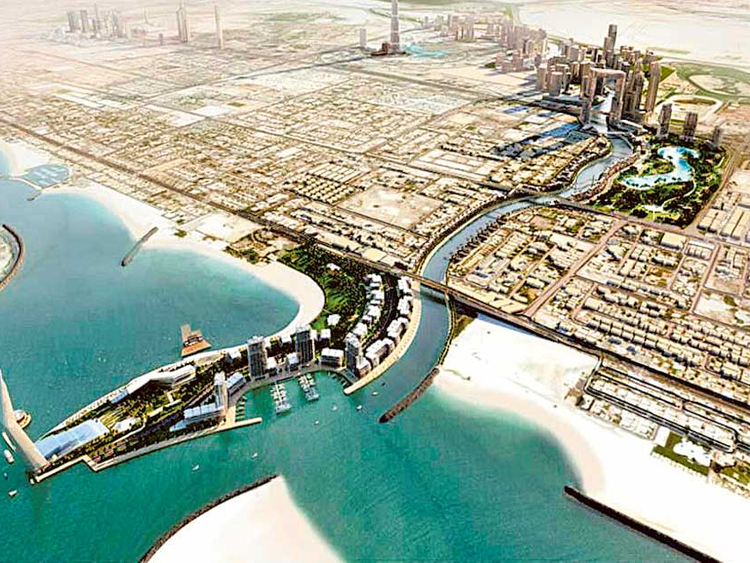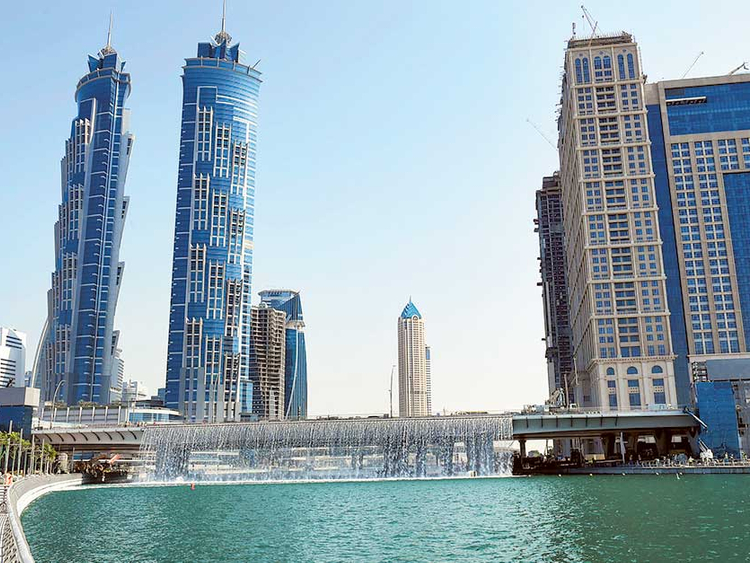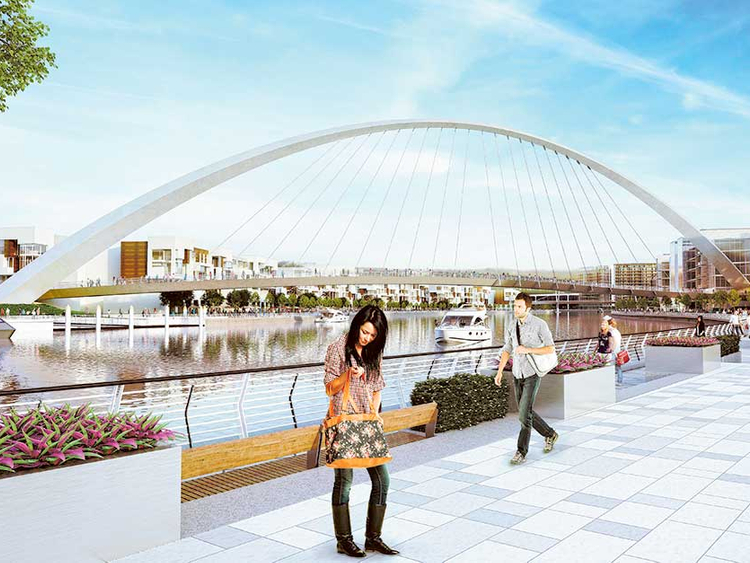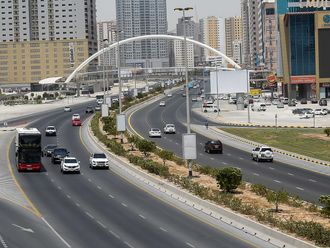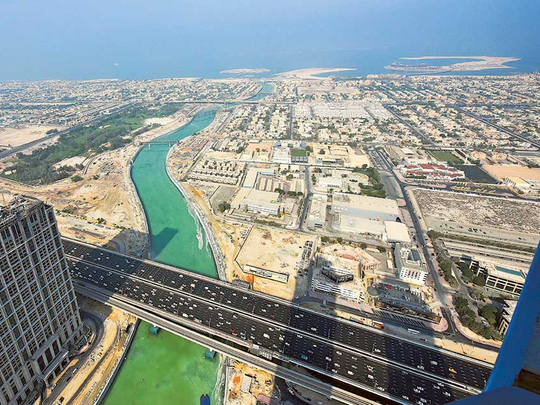
Dubai: The wait is finally over. The Dubai Water Canal, which has been in the making since October 2013, officially opens on Wednesday.
Giving a new dimension to the city that is constantly under transformation, the Dh2.7 billion project will be inaugurated on Wednesday
evening by His Highness Shaikh Mohammad Bin Rashid Al Maktoum, Vice-President and Prime Minister of the UAE and Ruler of Dubai, the Roads and Transport Authority announced on Tuesday.
The 3.2-kilometre-long canal serves as the final segment of the Dubai Creek extension, terminating in the Arabian Gulf via Al Safa, Al Wasl and Jumeirah 2.
The opening of the canal opens up new possibilities in marine transport, connecting the historic areas of Deira and Bur Dubai through the extended waterway of Dubai Creek, Business Bay and Dubai Water Canal.
Nine marine stations will operate from Thursday, offering ferry and water taxi services.
Additionally, as the adjoining areas of the 6.4-kilometre-long waterfront are developed, the canal will offer a new residential district, tourist attractions and recreational facilities, including several hotels, restaurants and entertainment.
The development project is set to generate over 80,000 square metres of public facilities, including six kilometres of walkway, a three-kilometre-long jogging track and 12 kilometres of cycling tracks, apart form other leisure amenities and shopping experiences.
Announcing the opening, Mattar Al Tayer, director-general and chairman of the Board of Executive Directors of the RTA, said, “The Dubai Water Canal is one of the smartest ideas of Shaikh Mohammad that adds a unique tourist and commercial showpiece, offering a new style in Dubai. Shaikh Mohammad is always keen to roll out visionary ideas that define new concepts for people’s happiness and welfare.”
Work on the canal began on October 2, 2013, running through five phases that saw three flyovers built, apart from the excavation work.
The excavation work had three million cubic metres of sand dredged, allowing 1.8 million cubic metres of water to flow in.
A 16-lane, 570-metre-long flyover was built on Shaikh Zayed Road that became fully operational in July this year.
The six-lane Al Wasl Road bridge, along with a three-lane ramp from Al Athar Road to Hadiqa Street, opened to traffic in March this year, while the six-lane Jumeirah Road bridge opened in July. The two bridges are 530 metres and 414 metres long respectively, whereas the ramp is 370 metres in length.
Among the key features of the canal, that is up to six metres deep, are the three uniquely designed pedestrian bridges that run across the water body. The design of the foot crossings represent concepts of the past, present and future.
The RTA developed the project in partnership with master developers Meras and Meydan, employing 4,600 workers through four contractors and 60 subcontractors.
With the width ranging from 80 metres to 120 metres, the canal allows up to 32-metre-long boats. The maximum allowed height limit for boats is 8.5 metres.
Keen to use latest technologies, RTA has employed smart lighting systems all along the canal as well as on the new bridges and the Shaikh Zayed bridge fountain. The lights are controlled via smart apps.
A key part of the project is the land reclamation work on the edge of the canal, that creates an artificial peninsula, doubling the recreational area of Jumeirah Beach Park.
Adding to the canal’s appeal, walkways have been installed along its 6.4 kilometre banks, equipped with benches all along the waterway for visitors to sit and relax.
Pedestrian Bridges
As part of the project, five pedestrian bridges have been built, three across the Dubai Water Canal, each boasting a different aesthetic appeal. Two other bridges have been built, one across Al Wasl Road and another across Hadiqa Street.
Two pedestrian bridges across the canal are located between Shaikh Zayed Road and Al Wasl Road, and the third bridge is located between Al Wasl Road and Jumeirah Road.
Based on a heritage design, the first pedestrian bridge extends 120 metres in length and six metres in width. The bridge is suspended by metal cables based on metal pylons built on concrete pillars.
Developed on a modern design concept, the second bridge measures 205 metres in length and 6.5 metres in width and has a shape that resembles an ‘S’. This pedestrian bridge is suspended by an oval arch rising 50 metres and is supported by concrete pillars on both sides of the canal with steel cables lifting the bridge floor. This bridge also has concrete ramps on both sides to facilitate cyclists.
Boasting a futuristic design, the third bridge is 140 metres long and 3.5 metres wide and is built in the form of a twisted steel bracket. It stands on steel columns on both sides of the canal.
All bridges are fitted with electric elevators and escalators on both sides.


